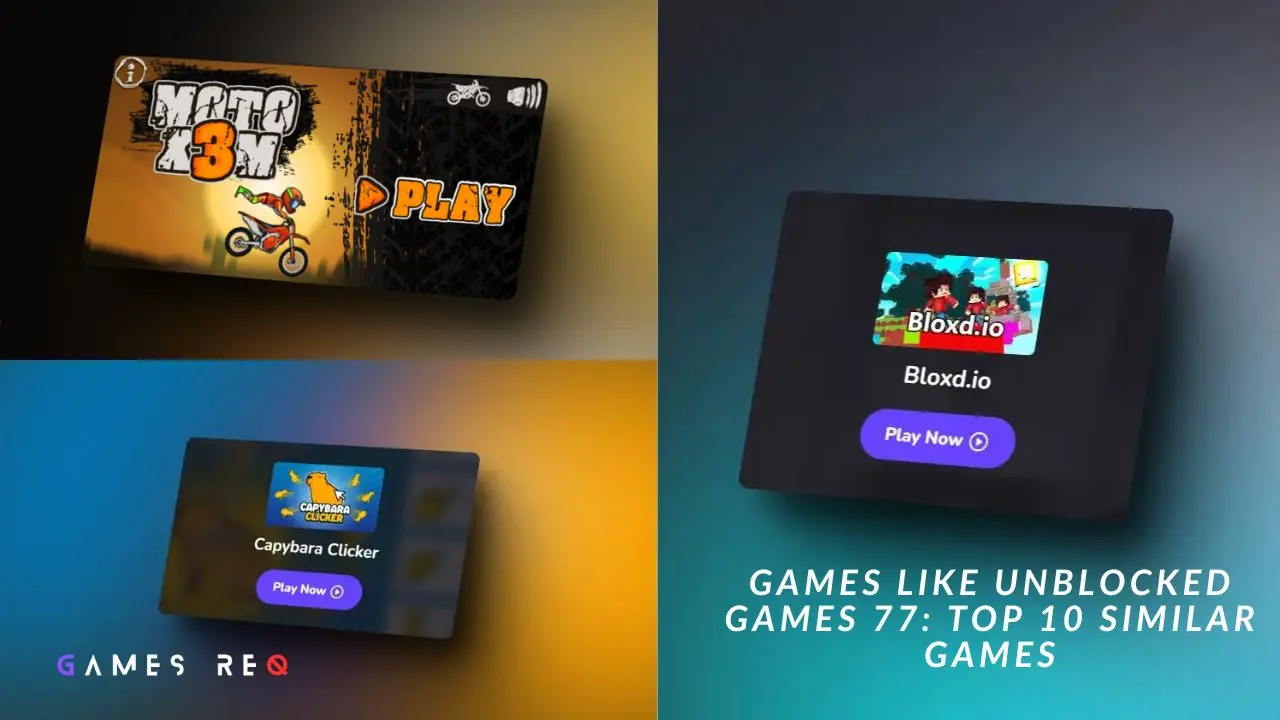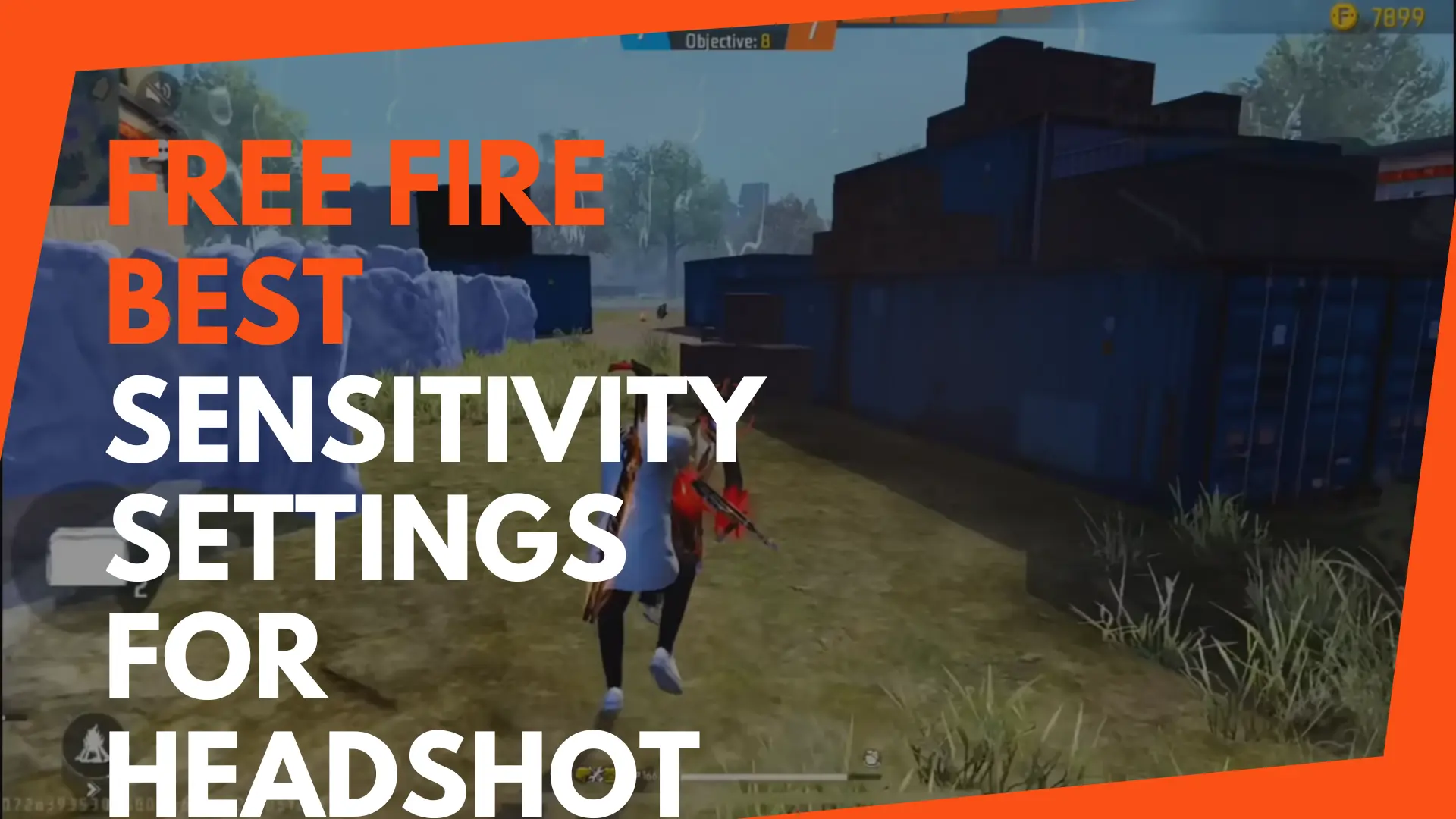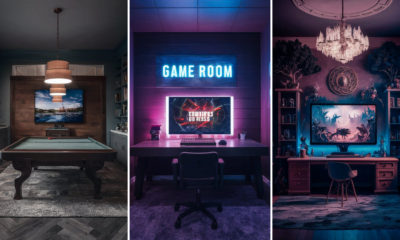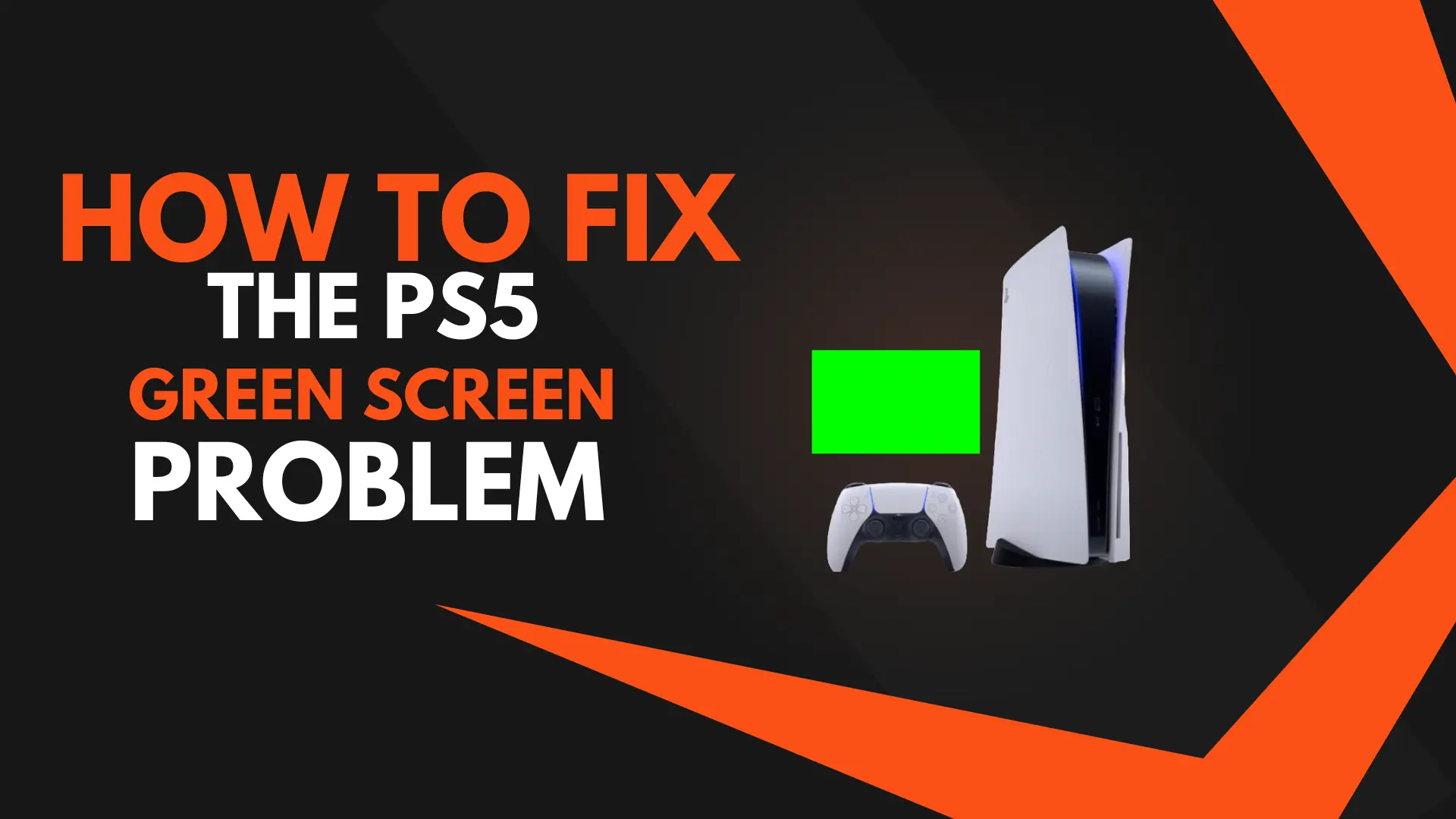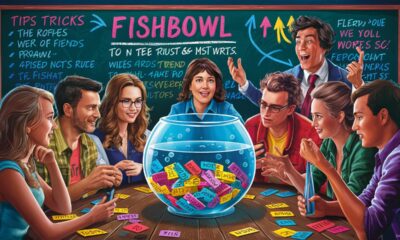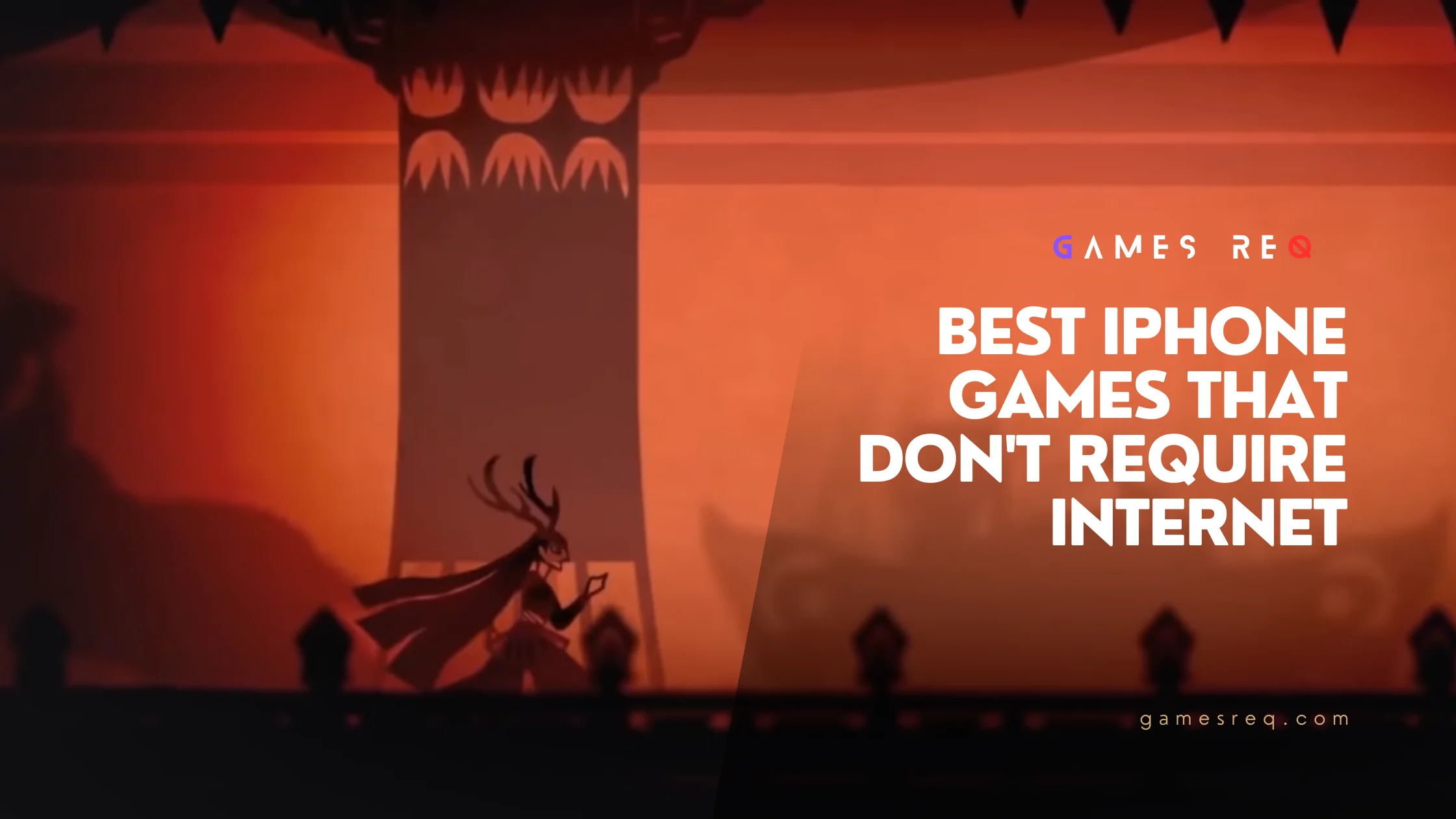Boom 3D: Experience 3D surround sound in games Released Year
Boom 3D: Experience 3D surround sound in games 2019
What is The Released Year of Boom 3D: Experience 3D surround sound in games ?
- Boom 3D: Experience 3D surround sound in games Released Year is 2019
Note: For More Game Informations Check The Official Website. Also Check Our System Requirements Section To Get Games Minimum Requirements Details.

Home Decor
10 Outdoor Party Essentials for an Unforgettable Bash

There’s something magical about hosting an outdoor party—fresh air, open skies, and the freedom to let loose. Whether it’s a backyard barbecue, a garden birthday bash, or a casual summer get-together, having the right essentials can make or break your event. From seating to snacks, we’ve rounded up the top 10 must-haves to ensure your outdoor party is a hit. Let’s dive in!
Setting the Scene
1. Comfortable Seating
No one wants to stand all day, so comfy seating is a must. Folding chairs are portable and budget-friendly, while outdoor cushions or bean bags add a cozy vibe. Arrange seats in small clusters to spark conversation and keep guests mingling. Pro tip: mix and match styles for a fun, eclectic look.


2. Weather-Proof Shelter
Mother Nature can be unpredictable, so a sturdy shelter is key. A pop-up canopy offers shade on sunny days, while a waterproof tent keeps the party going through a light drizzle. Choose a size that fits your guest list and ensure it’s anchored securely. Bonus: decorate with fairy lights for extra charm.


3. Outdoor Lighting
As the sun sets, good lighting keeps the mood alive and prevents trips in the dark. String lights create a warm glow, solar-powered garden stakes are eco-friendly, and lanterns add a rustic touch. Place lights along pathways and around seating areas for both safety and ambiance.
Food and Drink Essentials
4. Portable Grill or BBQ
Nothing says outdoor party like the sizzle of a grill. A portable gas or charcoal grill is perfect for whipping up burgers, veggies, or kebabs. Ensure it’s clean and fueled up before guests arrive, and keep a fire extinguisher nearby for safety. Your guests’ taste buds will thank you!

5. Cooler with Ice
Keep drinks and perishables chilled with a reliable cooler. Hard-shell coolers are durable for large gatherings, while insulated bags work for smaller events. Fill with ice packs or cubes and organize drinks for easy access. Tip: add a separate cooler for snacks like fruit or dips to avoid cross-contamination.

6. Reusable Tableware
Ditch the flimsy paper plates for eco-friendly, reusable tableware. Bamboo plates, stainless steel cups, and sturdy plastic utensils are durable and sustainable. They’re easy to clean and store, making post-party cleanup a breeze. Plus, they elevate the aesthetic of your spread.

Entertainment and Comfort
7. Outdoor Speaker System
Music sets the vibe, so a quality Bluetooth speaker is non-negotiable. Look for a water-resistant model with long battery life to keep the tunes flowing. Create a playlist with crowd-pleasers, but keep the volume neighbor-friendly. Your guests will be dancing in no time!

8. Games and Activities
Keep everyone entertained with outdoor games. Cornhole and badminton are easy to set up, while a DIY photo booth with props adds a fun, interactive element. Choose activities that suit all ages to ensure everyone feels included, from kids to grandparents.
Practical Necessities
9. Insect Repellent
Don’t let mosquitoes crash your party. Citronella candles add ambiance while repelling bugs, and natural sprays are gentle for all guests. Set up repellent stations around the perimeter and remind folks to reapply. A bite-free party is a happy party!

10. Trash and Recycling Bins
Keep your space tidy with clearly labeled trash and recycling bins. Portable trash bags work for small gatherings, while larger bins suit big crowds. Place them in convenient spots and empty them regularly to avoid overflow. Cleanup will be a snap!

Conclusion
With these 10 outdoor party essentials, you’re ready to host a memorable bash that’ll have guests talking for weeks. Plan ahead, add your personal flair, and let the good times roll. What’s your go-to outdoor party must-have? Drop your tips in the comments below!
Call to Action: Share your favorite outdoor party ideas or essentials in the comments, and check out our other party-planning guides for more inspiration!
Game Info
The Psychology of Warface Players: Why Medics Are Rare
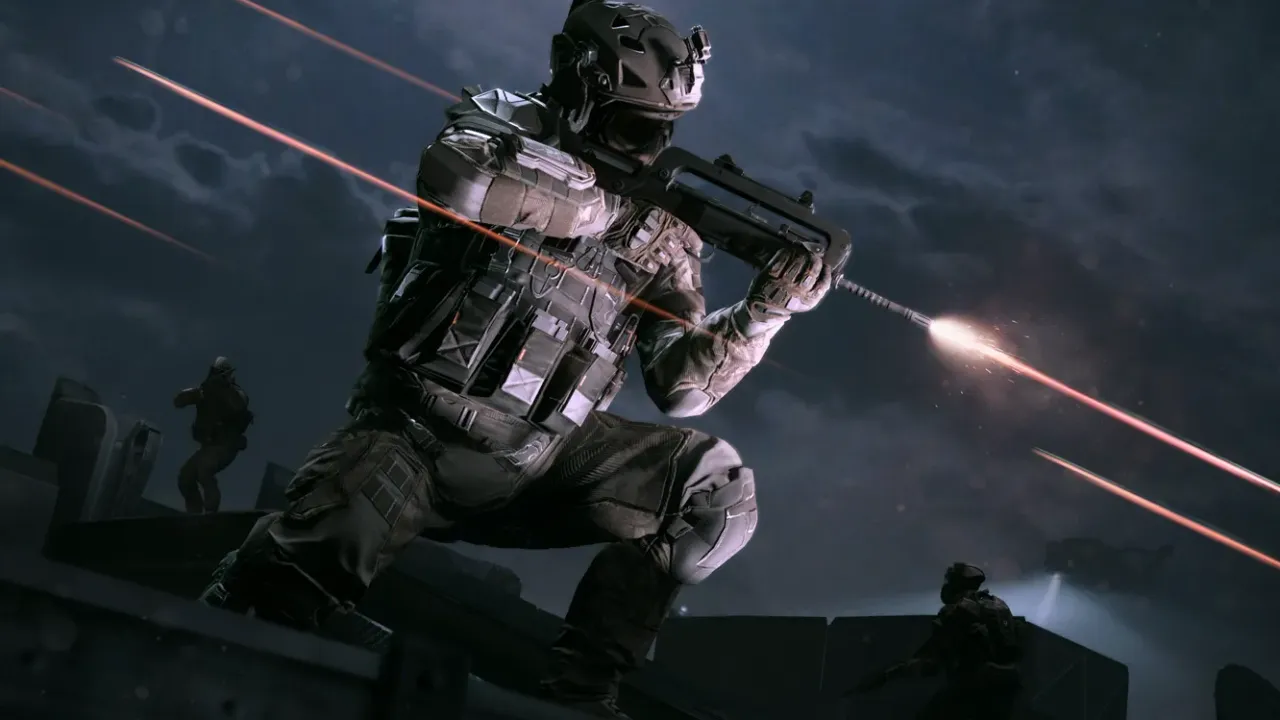
Key Points
- Research suggests medics are rare in Warface due to players preferring damage-dealing classes over support roles like medic, which focus on healing and reviving.
- It seems likely that the limited range of shotguns, medic’s primary weapon, makes the class feel less effective and riskier compared to other classes.
- The evidence leans toward game mechanics, like reanimation coins in PvE and automatic respawns in PvP, reducing the need for medics, making the role less appealing.
- It appears that many players prioritize individual glory, such as high kill counts, over teamwork, which can make the medic role feel unrewarding.
Why Players Avoid Medics
Warface is a team-based shooter, but not everyone plays for the team. Many players love the thrill of racking up kills with classes like Rifleman or Sniper, which offer long-range firepower and big damage. Medics, equipped with shotguns, are great up close but feel less exciting and more dangerous to play, especially when you have to get close to enemies.
How Game Mechanics Play a Role
In PvE modes, players can use reanimation coins to respawn with full health and armor, making the medic’s revive ability less necessary. In PvP, players automatically come back at spawn points, so medics aren’t as crucial. These mechanics can make players wonder, “Why bother being a medic?”
The Risk and Reward Balance
Being a medic means putting yourself in harm’s way to save teammates, but the reward is small. Revived players come back with half health and no armor, which can feel like a waste if they get taken out again quickly. This high-risk, low-reward setup can turn players away from the role.
Detailed Analysis
This section dives deeper into why medics are so rare in Warface, exploring player psychology, game mechanics, and class challenges. It’s like peeling back the layers of a mystery to understand why this crucial role often gets left behind in the heat of battle.
Background on Warface and the Medic Role
Warface is a free-to-play, team-based first-person shooter where players can choose from classes like Sniper, Rifleman, Engineer, Medic, or SED (a humanoid robot). Each class has unique weapons and roles, with medics focusing on healing and reviving teammates using shotguns for close-range combat. Despite their importance, discussions on platforms like Reddit and Steam show that medics are often scarce, leaving players frustrated and teams at a disadvantage.
Player Preferences: Damage Over Support
Research suggests that many Warface players are drawn to classes that let them deal damage and rack up kills, like Rifleman with assault rifles or Sniper with long-range shots. A Reddit post titled “Why does nobody play as medic?” highlights this, with comments noting, “People don’t care about teamwork, they just want kills.” This focus on individual glory over team support makes the medic role, which is all about healing and reviving, feel less appealing. It’s like choosing to be the star of the show rather than the behind-the-scenes hero.
For example, a player might feel more satisfied landing a headshot from across the map as a Sniper than healing a teammate as a medic, even if the heal wins the match. This preference for damage-dealing classes is a big reason why medics are rare, especially among players who prioritize personal achievements over team success.
Weapon Limitations: Shotguns and Vulnerability
It seems likely that the medic’s weapon, primarily shotguns, plays a significant role in their rarity. Shotguns are powerful at close range but have limited effectiveness beyond that, making medics vulnerable in open areas. A Reddit comment mentions, “Shotguns kills you quickly but have limited range,” and another notes, “Shotguns like Chiappa are less effective now.” This means medics have to get dangerously close to enemies, which can feel like a death sentence in fast-paced battles.
A Steam guide on mastering the medic class emphasizes, “Medic is effective within shotgun range but ‘dead’ outside it; stick to confined areas.” This limitation can discourage players who want versatility in combat, preferring classes with weapons that work at various ranges. For instance, a Rifleman can engage enemies from medium distance, while a medic might struggle if the fight moves out of shotgun range, making the class feel less appealing.
Game Mechanics: Reducing the Need for Medics
The evidence leans toward game mechanics significantly reducing the need for medics, making the role less attractive. In PvE modes, reanimation coins allow players to respawn with full health, armor, ammo, and consumables, as noted in the Reddit discussion: “Coins allow full health, armor, ammo, and consumables on respawn, while medic revives give half health, no armor.” This makes the medic’s revive ability feel redundant, especially in easier missions.
In PvP, players resurrect at spawn points, further diminishing the medic’s role. A comment states, “In PvP, players resurrect at spawn, so medic role less necessary.” This means medics are only really needed in specific scenarios, like long, hard PvE missions (e.g., Blackshark, Hydra), as mentioned in the Reddit thread. For players grinding for rewards or playing casually, these mechanics can make choosing medic feel like a waste of time.
Teamwork vs. Individual Focus
It appears that many players prioritize individual performance over teamwork, which can make the medic role feel unrewarding. The Reddit post “I need a medic!” complains, “As a person who mains a medic, please let me revive you. THOSE DEATHS ARE HOW THE ENEMY WINS.” This shows a disconnect where some players don’t value the medic’s efforts, focusing instead on their own kills.
A table summarizing player behavior from the Reddit discussion illustrates this:
| Reason | Details/Comments | Source (Commenter, Score) |
|---|---|---|
| Lack of teamwork, focus on kills | People don’t care about teamwork, just want kills, making medic role less appealing. | Shingo_Yabuki (Score: 8) |
| Players prefer using coins over medic revives in PvE | No point playing medic in PvE when coins offer better respawn, except in hard ops. | Trash-Jr (Score: 2), M_KLOL (Score: 1) |
| Many players choose Rifleman over medic | Everyone plays boring Rifleman, reducing medic players. | Watfire74 (Score: 2) |
This table shows how the lack of teamwork and preference for other classes contribute to the medic shortage, highlighting a cultural preference for individual glory in Warface.
High Risk, Low Reward: The Medic’s Dilemma
The medic role is high-risk with potentially low reward, which can turn players away. To revive a teammate, medics often have to expose themselves to enemy fire, as noted in the Steam guide: “Self-preservation is huge; as the most important member of your team, once you go down everyone else starts dropping like flies.” A Reddit comment adds, “Medic must put themselves in danger to revive, only reward is medkit cooldown, revived player at disadvantage.”
For example, if a teammate dies in the open under enemy fire, reviving them can lead to the medic getting killed too, with little benefit. The Steam guide advises, “If a team member dies in the open and his body is being covered by an MG turret, it’s probably not a good idea to revive him unless you want to end up just like him.” This high-risk, low-reward setup can make players feel like the medic role isn’t worth the effort, especially when the revived player is still at a disadvantage with half health and no armor.
Technical and Mechanical Challenges
Beyond gameplay, technical issues can make playing medic less appealing. High ping can affect a medic’s ability to time revives or heal effectively, as mentioned in a Steam comment: “500 ping causing issues, with opponents one-hitting from afar with shotguns like Guardian Crye Precision SIX12.” Changes to game mechanics, like making the defibrillator harder to use without spending in-game currency, also frustrate players. A comment notes, “Defibrillator changes force spending in-game currency (70k earned, 100k needed, now unobtainable), feels like a ‘kick to the jaw.'”
These challenges can make the medic role feel like an uphill battle, discouraging players who might otherwise enjoy the class. For instance, if you’re constantly struggling with ping or feeling forced to spend money to keep up, you might just switch to a class with fewer technical hurdles.
The Importance of Medics and Future Considerations
Despite these challenges, medics are undeniably crucial for team success, especially in tougher missions or competitive matches. The Steam guide states, “A good medic can make all the difference between a win or loss.” However, their rarity highlights a disconnect between what the game needs and what players want. Understanding these factors can help game developers and players alike find ways to make the medic role more appealing, perhaps by improving shotgun effectiveness, incentivizing teamwork, or balancing game mechanics to highlight the medic’s importance.
Conclusion
The scarcity of medics in Warface is a complex issue rooted in player psychology, game design, and class mechanics. Players are drawn to damage-dealing classes for their excitement and individual glory, while medics face limitations like shotgun range, high risk, and reduced necessity due to game mechanics like reanimation coins. By recognizing these factors, players can make more informed choices, and developers might consider adjustments to make the medic role more attractive, ensuring teams have the support they need to succeed.
FAQ
Q: Can medics be effective in combat?
A: Yes, medics can be effective at close range with their shotguns, but their main job is supporting the team. Balancing combat with healing and reviving is key.
Q: Are there any incentives for playing medic?
A: While there aren’t specific in-game rewards mentioned, playing medic can lead to better team performance and potentially higher scores in team-based modes.
Q: How can I improve as a medic?
A: Practice managing your defibrillator charge, stay aware of your teammates’ health, and position yourself strategically to minimize risk while maximizing your support capabilities.
Q: Is the medic class only useful in certain game modes?
A: Medics are particularly valuable in PvE missions, especially harder ones, and in PvP modes where team survival is key. However, in casual or easy modes, their necessity might be less apparent.
Citations:
Top 10
Best Games for Kids Aged 10: Fun & Learning Combined
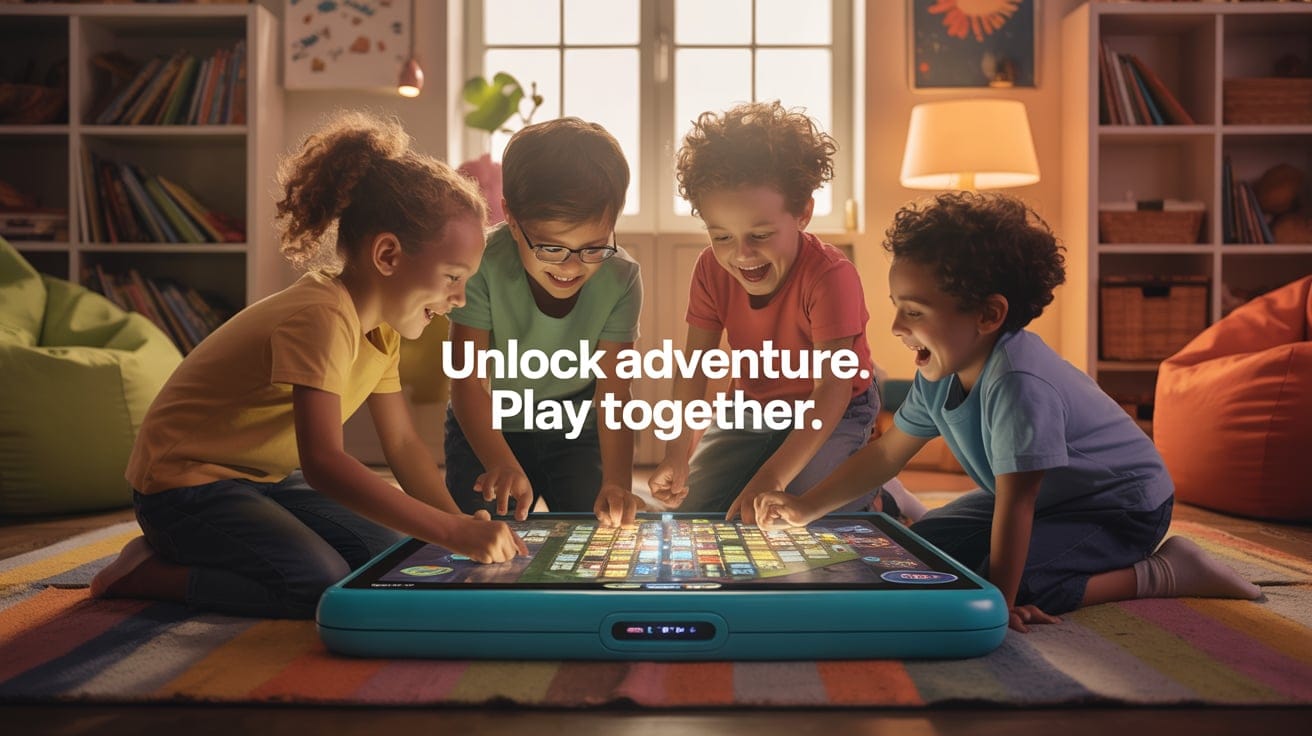
Key Takeaways
- Games for 10-year-olds spark creativity, teamwork, and problem-solving.
- Choose from board, video, outdoor, or educational games for variety.
- Always check age ratings and set screen time limits for safety.
- Mix fun and learning with games like Minecraft, Clue, or tag.
- Explore safe, engaging options to keep kids entertained and growing.
Answer to Your Search
Looking for games that keep your 10-year-old entertained while helping them grow? You’re in the right place! This article dives into the best games for kids aged 10, covering board games, video games, outdoor fun, and educational picks. We’ll guide you step-by-step to pick safe, fun, and brain-boosting games your kid will love.
Introduction
Picture this: your 10-year-old is bubbling with energy, curious about everything, and ready for fun. But how do you pick games that keep them hooked and help them grow? Games for kids aged 10 aren’t just about passing time—they’re a chance to build skills, make friends, and spark creativity. Whether it’s a rainy day board game marathon or a sunny afternoon outside, the right games can make all the difference. In this guide, we’ll walk you through the best games for your 10-year-old, from brainy puzzles to active outdoor challenges. Ready to find the perfect fit? Let’s jump in!
Why Games Are Important for 10-Year-Olds
At 10, kids are at a super exciting stage. Their brains are like sponges, soaking up new ideas, and they’re starting to think more like little adults. Games aren’t just fun—they’re a sneaky way to help them grow. Playing games can boost their problem-solving skills, like figuring out strategies in a board game. They also learn to work as a team, whether they’re passing a ball or building a Minecraft world together. Plus, games let kids express their creativity, like designing a cool Roblox level. The best part? They’re having so much fun, they don’t even realize they’re learning. By picking the right games, you’re giving your kid a chance to shine while keeping things light and enjoyable.
Types of Games for 10-Year-Olds
Board Games
Board games are a classic for a reason—they bring everyone together for some good old-fashioned fun. For 10-year-olds, games like Monopoly Junior are perfect. They teach kids about money and strategy without being too complicated. Clue is another great pick—it’s like being a detective, solving mysteries while sharpening logic skills. Then there’s Ticket to Ride, where kids plan train routes across a map, learning geography and planning along the way. These games are awesome for family nights, helping kids practice math, patience, and taking turns. Plus, they’re screen-free, which is a nice break from devices. Want to make it a tradition? Set up a weekly game night and watch your kid’s confidence grow!
Video Games
Video games get a bad rap sometimes, but the right ones can be a blast and educational. For 10-year-olds, Minecraft is a superstar. Kids can build anything from castles to roller coasters, flexing their creativity and problem-solving muscles. Roblox is another hit, with tons of kid-friendly games inside one platform—just make sure to check the settings for safety. Super Mario Odyssey is great for Nintendo fans, with colorful worlds and puzzles that keep kids engaged. Worried about screen time? Set clear limits (like an hour a day) and use parental controls to keep things safe. Most platforms, like Roblox or Nintendo, have built-in tools to block strangers or limit chat. Check out Common Sense Media for game reviews and age ratings to pick the best ones.
Outdoor Games
Nothing beats the joy of running around outside, and 10-year-olds have energy to burn! Games like tag are simple but keep kids moving and laughing. Capture the Flag is another winner—it’s like a big adventure where kids strategize and work together to “steal” the other team’s flag. If your kid loves sports, try soccer or kickball—they’re great for building teamwork and staying active. Outdoor games are awesome for physical health, helping kids stay strong and coordinated. They also teach kids how to play fair and cheer each other on. Next time the sun’s out, grab a ball or some chalk for hopscotch, and watch your kid light up with excitement. Wondering what’s next? Let’s talk about games that teach!

Educational Games
Who says learning can’t be fun? Educational games for 10-year-olds sneak in lessons while keeping things exciting. Scratch, a free coding platform from MIT, lets kids create their own games while learning the basics of programming. It’s like playing with digital Legos! For math, apps like Prodigy turn addition and subtraction into a magical adventure. Offline, try games like Bananagrams to boost spelling and vocabulary—it’s like Scrabble but faster and more fun. These games are perfect for balancing play and learning, whether your kid’s at home or on a tablet. Check out Scratch’s website to get started with coding—it’s free and super easy to use. Curious about picking the right game? Let’s break it down.
How to Choose the Right Games
Picking games for your 10-year-old doesn’t have to be overwhelming. Start by thinking about what they love—do they enjoy puzzles, building, or running around? Check the age rating on games, like ESRB for video games or box labels for board games, to make sure they’re kid-friendly. ESRB’s website is a great place to learn about ratings like “E for Everyone.” Next, mix it up—choose some indoor games for rainy days and outdoor ones for sunny afternoons. Balance screen time with non-digital play to keep things healthy. If your kid’s super into art, a game like Minecraft might spark their creativity. Love sports? Try soccer or tag. By matching games to their interests, you’ll keep them engaged and happy. But what are the best games out there? Keep reading!
Top 5 Recommended Games for 10-Year-Olds
Here’s a roundup of five awesome games your 10-year-old will love:
- Minecraft (Video Game): Build epic worlds and solve puzzles. It’s creative, safe with parental controls, and teaches planning.
- Clue (Board Game): A mystery game that sharpens logic. Kids love guessing “whodunit” while learning to think ahead.
- Capture the Flag (Outdoor Game): A team-based game that gets kids running and strategizing. Perfect for a backyard adventure.
- Prodigy (Educational Game): A math adventure that feels like a fantasy game. Kids practice skills without even noticing.
- Ticket to Ride (Board Game): Plan train routes and learn geography. It’s fun for the whole family and easy to pick up.
Each game is a mix of fun and learning, perfect for keeping your kid engaged. Want to know how to keep gaming safe? Let’s dive into that next.

Safety Tips for Gaming
Keeping your 10-year-old safe while gaming is super important. For video games, set up parental controls to limit who they can talk to online. Platforms like Roblox and Nintendo Switch have easy settings for this—check their websites for step-by-step guides. Stick to a screen time limit, like 1-2寻
FAQ
What are the best types of games for a 10-year-old?
Board games like Monopoly Junior teach strategy, video games like Minecraft spark creativity, outdoor games like tag keep kids active, and educational games like Scratch make learning fun. Mix them for variety!
How do I know if a game is safe for my 10-year-old?
Check age ratings on ESRB or PEGI for video games and box labels for board games. Use parental controls for online games and set screen time limits.
How can games help my 10-year-old learn?
Games like Prodigy teach math, Scratch introduces coding, and board games like Clue boost logic and problem-solving, all while keeping kids engaged and entertained.
How much screen time is okay for gaming?
Aim for about an hour a day for video games, balanced with outdoor or board games. Use parental controls to manage online interactions and keep things safe.
Conclusion
Games for kids aged 10 are more than just fun—they’re a way to build skills, make memories, and keep your child growing. From the strategy of Ticket to Ride to the creativity of Minecraft or the energy of Capture the Flag, there’s something for every kid. By picking age-appropriate games and setting safety rules, you’re giving your 10-year-old a chance to learn and laugh. So, what’s next? Grab a game, gather the family, or head outside for some fun. Share your kid’s favorite games in the comments or check out Common Sense Media for more ideas. Let the good times roll!

 Games Like2 years ago
Games Like2 years agoBest Games Like Unblocked Games 77 | Top Alternatives

 Gaming1 year ago
Gaming1 year agoFree Fire Best Sensitivity Settings For Headshot

 Top 102 years ago
Top 102 years agoThe Top 20 Android Horror Games to Play with Friends

 Game Room Ideas12 months ago
Game Room Ideas12 months ago52 Incredible Game Room Ideas to Elevate Your Home Entertainment

 Tutorials2 years ago
Tutorials2 years agoHow to Fix the PS5 Green Screen – Tips To Try

 Tutorials12 months ago
Tutorials12 months agoHow to Play Fishbowl Game: Rules, Regulations, and Tips

 Top 1012 months ago
Top 1012 months ago10 Best Offline Mobile Games For Long Car Rides 2024

 Top 102 years ago
Top 102 years agoThe 25 Best Offline iPhone Games to Play Without Internet






